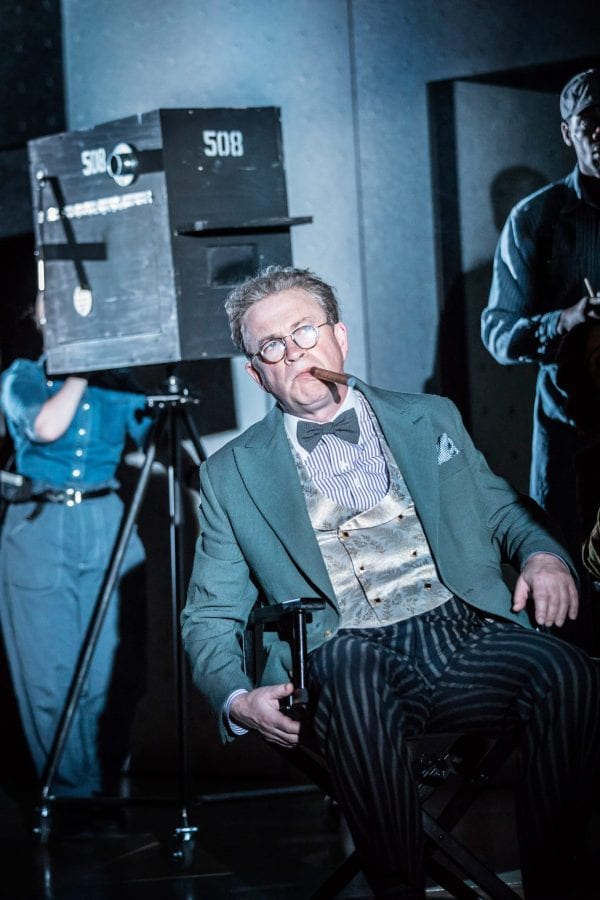Once in a Lifetime is a show about the tenuous and complicated relationship between creativity and destruction. Re-adapted here by Chris Hart, son of one half of the original writing duo Moss Hart and George S Kaufman, the show may well be set in 1930s Hollywood just as the talkies are about to change cinema forever, but it might also be poking fun at an art form that is a little closer to home.
Director Richard Jones always takes risks with little produced, marginalised or very well known works in a bid to uncover something new that might be a comment on our own times. Here, a story about hapless Vaudeville trio act George (John Marquez), Jerry (Kevin Bishop) and May (Claudie Blakley), who set out to conquer Hollywood with their mythic elocution school, is the perfect fit for the director to explore themes that seem to obsess him: national myth, parody, the tyranny of power, willed self-destruction, bureaucracy, global fantasy, etc.
So far, the show has not gone down so well with the critics, though on the two occasions I have seen it, the audience, including parties of teenage school children, are falling about laughing in the aisles. I wouldn’t wonder if sometimes critics have an ability to suffer what Kenneth Tynan once called “an audience’s over riding expectation of a show to come out and cause them to love it.”
In a way everything in the show is a parody of what is deemed satirical, from George’s obsession with Indian Nuts to his parroting of other people’s thoughts and feelings to film exec Glogauer (Harry Enfield) bumbling around onstage. The gag is that supposedly the stupidest and most slow witted of them all, i.e. holy fool George, is somehow the only one who can survive Hollywood’s horrors and have the courage to tell some home truths to Glogauer, who will eventually seal the trio’s success as film producers.
Everything, as Glogauer so obviously illustrates at the play’s end, is down to personal perception and interpretation though. Is George really an idiot or an artist, who, by imitating others but adding a twist of his own, becomes truly original? Watch the head banging scene where he mimics frustrated but victim like playwright Lawrence Vail (Daniel Abelson) and then offloads onto Glogauer and decide. Some of the performances are particularly understated or over emphasised: for example Harry Enfield’s rather demur Glogauer and in contrast, Amanda Lawrence’s frenzied receptionist. Is it too far to say that Jones is perhaps satirising people’s expectations of what should be satirised and then debunking them at the last moment?
All the ensemble are hilarious, including John Marquez as an innocent, but tactless George. The love relationship between May and Jerry might be under explored, but Jones makes it clear from the onset he is not much interested in it.
Hyemi Shin’s wide proscenium set might be a take on Jones’ big hit Annie Get Your Gun that was at the same theatre back in 2009. The time the show is set in predates Jones’ AGYG, but it looks forward to that production, stealing many of its stylistic devices: the thin narrow stage to represent a film theatre, a monochrome motion background that is a take on Ultz’s travelator, the busy buffoonery onstage that we get with all of Jones’ shows, made all the more comic by there being little stage to move around on (there is not space for everyone, it seems to be saying).The link between creativity and destruction is a big theme and leaves an audience to come to its own conclusions. An audience may also wonder if this production is really concerned with the film world. Hart and Kaufman had never set foot in the film studios when they wrote it. They knew a lot about the “legitimate stage” though.
Once in a Lifetime is at the Young Vic until 14th January.
Photo Credit: Harry Enfield as Glogauer in Once in a Lifetime at the Young Vic © Johan Persson

